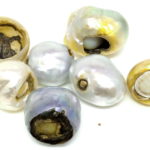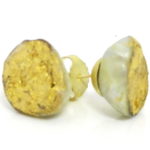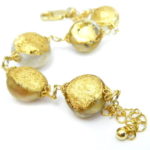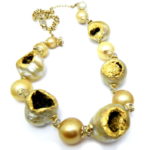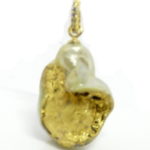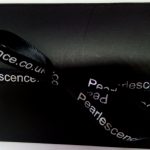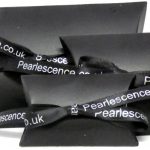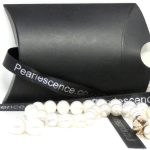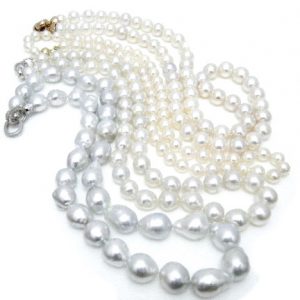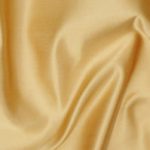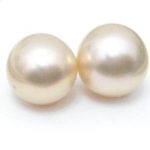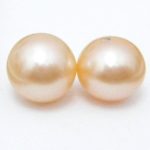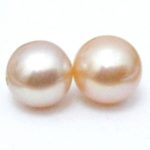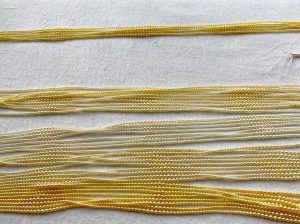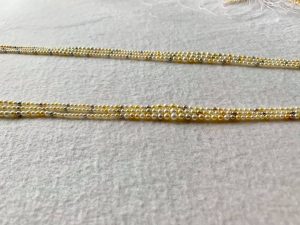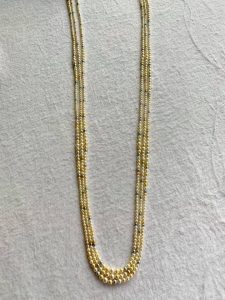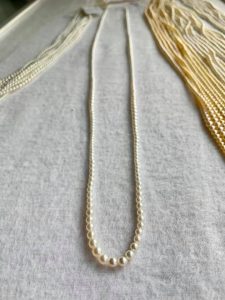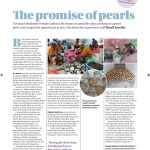What do you say when a pearl company asks if you want to help with harvesting south sea pearls on their farm in Indonesia? You say ‘yes please’ and ‘when?’ and immediately buy plane tickets. Well, Betty Sue King and I did, anyway. Let me take you with us on an amazing adventure where we worked hard and learned so much (…and were wet a lot of the time).

The adventure starts
Our adventure started very early in the morning with a taxi ride to Hong Kong airport to fly to Jakarta and then Manado airports in Indonesia. The next day we set off to the farm itself, on an island to the north of Sulawesi. A car ride through twisty country roads where, if a dog, piglet or human felt like walking in the middle of the road or have a bit of a sleep in the sun, well, the car went round them. As a UK driver I was …. arghhhhh…but it all seemed to work out somehow. Then, after a short wait, a tiny wooden boat appeared which was to be our ride to the farm. Again, thoughts of health and safety were quickly squashed. Everyone local seemed perfectly happy with the boat so..
Happily the sea was smooth and the trip uneventful, as Betty Sue and I pinched ourselves. We’d been excited about this trip for months and now, here we were. Our eyes strained for our first glimpse of the farm as we skirted numerous small islands, all covered in dense green lush trees and with the occasional village on the shore. Finally we were there.

Our first glimpse of the farm
(How to scramble off the boat with some semblance of dignity and along the dock – slippery and wet, without falling back into the sea?) (especially the short section which was just three planks)

Three planks of slippery doom. By the end of our stay I had enough confidence to gulp quietly to myself then stride confidently along them
Our host, Dev, shows us round, from one end of the farm to the other – there’s a hatchery, the harvest has started, there are baskets, floats,nets piled everywhere, men being purposeful at their tasks, and finally we are shown the first pearls harvested, that very day.

The first day’s pearl harvest. Note the tags in each basket which show who nucleated the oysters and other details of their history. Note also me remembering my reporter roots and writing it all down!
The farm has four technicians who split grafting duties – two from Japan, who are the farm manager Hiroshi and his deputy Kudo and two local girls still being trained (who will have a worldwide transferable skill)
The main problem with training, indeed with any innovation or change in technique, in grafting with south sea pearls is that the time between carrying out the operation and the harvest, when you find out if the idea is good or the technique is sound is 18 month. Every technician takes copious notes of what they have done all the time, but it is a long time to wait..
This farm is doing a lot right though, because the survival rate from graft to harvest is 80%. Grafting is done when the oysters are around 7-8cm in size and around 10 months old.
First thing on our first full day on the farm we visited the hatchery. The farm raises its own baby oysters from eggs and sperm. They’re cared for and cosseted in a controlled environment with great food and no predators. Even at microscopic size they are recognisable as oysters – you can’t see anything when they are few days old except with a microscope.

Here’s the little baby oysters, just a few days old, only visible under magnification

The hatchery tanks. farm manager Hiroshi to the right

The water looks quite clear but there are many thousands of tiny little baby oysters happily swimming around

breakfast and dinner for hungry growing baby oysters
Baby oysters start their life in the ocean attached to these plaited ropes, tucked safely in rectangular cages like squared off lobster pots.

The plaited ropes for the little spats.
After visiting the hatchery we were put right to work. Out over the sea is a rectangular room where the harvest is done. The skiffs bring the baskets with the oysters right to the door, the oysters are removed from the baskets and the oysters opened. Then the flesh is scraped off into a bowl (yes, harvesting is brutal, there is no way around this) and when the bowl is full..that is where Betty Sue and I came in. Twice a day the whole room is washed down and cleaned.
We were placed at a small table with three bowls. One full of oyster bodies, one for pearls and one for the harvested bodies.

Getting started with learning how to harvest the pearls.
A brief lesson in where and how to look and feel for the pearls and we were away.

With this oyster not only is the pearl within easy to feel but it is visible.
At first we were, of course, hopelessly slow. I was concerned that I would miss a precious pearl – some oysters manage to discard their nucleus even after they are x-rayed. But practice made much nearer to perfect, especially encouraged when I found a series of tiny keishi, some no bigger than 1mm. Most of the keishi are in or right by the pearl sac and simply pop out at the same time, but some are hidden in the body of the oyster or around its mantle. These are, to all intents wild or natural pearls, even though CIBJO says they are cultured. (mostly I suspect because it would be next to impossible to verify provenance successfully and credibly)

A beautiful gold drop
It’s not a bit glamorous. Your feet are wet the whole time as the floor is continuously washed down and the oyster goo gets everywhere (however we both noticed it had a wonderful effect on the skin on our hands – beautifully smoothed and not wrinkled) Some pearls are easy to find, while others hide away deep in the body.
Neither of us could resist studying each and every pearl as it appeared in our hand, and I noticed that even the fastest and most experienced harvesters also looked carefully at each pearl before dropping it into the bowl to be quickly washed and then whisked off to be cleaned and sorted. There were pearls of all shapes and sizes, rounds, near rounds and drops, circles, deep and pale golds, champagne pearls and whites, up to 12mm and down to 1mm. I would have been very happy to bring every single one home with me. Each one was beautiful.

Random scoop from the harvest bowl. Every single one beautiful

Pile of opened shells, and a bowl of oysters about to be delivered to our table. It took quite a bit of strength and some incredibly fierce knives to open the shells.
I never got used to feeling one of these shrimps in the oyster bowl. The shrimps live in and around the oyster nets and every so often one would be in the bowl. I couldn’t help squealing like a baby when I felt it wriggle against my fingers, much to everyone’s amusement. I must have very sensitively tuned scaredy dangerous shrimp reflexes is all I can say

Oyster with accompanying shrimp
The adductor muscle – the meat of the oyster – is collected at the end of the day from all the oysters and is sold on as meat. We had some several times at the farm – delicious and you couldn’t really get fresher!

Last task of the day is collecting the delicious adductor muscle meat
Very little is wasted. The shells go for mother of pearl or are polished and sold.

These little shells are about six months old

Unpolished shell from the inside. This is a white shell

Unpolished shell from the outside

This shell has lots of gold. Polished

This shell is all white
Remember that the colour of the shell is no guide to the colour of the pearl though. The colour of the pearl is solely dependent on the colour genetically coded into the donor mantle tissue. To grow each pearl a nucleus is inserted into the gonad of the oyster when it has grown large enough. Between 18 and 20months at this farm.

6mm nucleus beads ready for grafting
It is a delicate operation. The nucleus bead and tiny sliver of mantle tissue need to be placed just exactly so, so that they are not rejected and the graft tissue does not die (a few un-nacred nucleus came out where the tissue had died). A couple of weeks later all the oysters will be x-rayed to check that the insert has been successful. Any where the oyster has managed to reject the nucleus (and who can blame them really?) will be rested and re-nucleated in due course). Pearls tend to grow larger in gold shells and smaller in white shells, although this is not a fixed and absolute rule.This farm uses a 6mm bead for nucleating. While the farm has tried second grafts they have found that they are not very effective against the extra time needed for harvesting so usually make only one harvest.
When they are little babies the oysters live on plaited ropes in protective baskets. Then they graduate to individual spaces on hanging flat pouch baskets – first eight then six to a basket.

you can see the two sizes of flat pouch baskets for the grafted oysters, six on the left and eight on the right.
The baskets are covered with nets to protect the oysters. The nets are changed every three months when all the encrustations are removed. Betty Sue and I went out in the skiff to help with this the day after the end of the harvest. We held the clean new bags open for the farm workers to slide the baskets in. Even though it was only 9am and I had applied factor 40 when the sun came out I could feel my skin starting to burn – factor 50 applied. Kudo was so worried about my anglo-saxon winter white skin he came and got us after about an hour. I wanted to stay out but he was right.

clear view of actual oyster body. The gonads, where the pearl is, is bottom right.
Both male and female oysters are grown. Theoretically male oysters grow larger and better pearls because the female oysters have eggs in the gonad taking up space. At one time the eggs would be removed but that left a void and the nucleus often moved. We never noticed that gender made a big difference to the pearl. Certainly size of oyster was not related to size of pearl. sometimes the biggest oysters produced small pearls, and the smaller oysters produced big ones.

Female on the left, male to the right
At the farm the pearls are simply washed in rotating barrels to remove the oyster goo, then sorted and put into lots for auction. I have brought back a few pearls which I can guarantee have had no treatment whatsoever apart from this brief wash

These barrels fit onto a rotating spindle. As you can see..water and another barrel with a pinch of soap is all the treatment they get
I picked out these keishi for myself

south sea keishi
and these few pearls will be available in due course. For those pearl lovers who want pearls with no treatments – I can guarantee that these have had nothing apart from a quick wash to remove oyster goo.

Gold south sea pearls. guaranteed untreated
During sorting careful note is made of who nucleated which batch and when in an attempt to work out successes and failures

one lot of nucleation from one day. Plenty of rounds but a real mix of colours and sizes
One example of this careful tracking . Betty Sue and I were given the honour of harvesting a special lot of oysters which had been grafted with akoya pearls as an experiment. Sadly the pearls were largely unremarkable and mostly not as high quality as the regularly nucleated ones. There was some discussion about trying freshwater pearls.
The harvest lasted three days. We spent most of the time in the harvesting room, but were also allowed out on the boats to see the baskets hauled up for harvest and then to help put new nets on the baskets once the harvest was over. During the three days 15,636 pearls were harvested, with an average size of 11mm (excluding keishi from the calculation)
Huge and lifelong thanks to Devchand Chodhry, Hiroshi Imaizumi and Shigekazu Kudo and all the staff on the farm for their patience as I blundered around trying to join in everything and, I am sure, getting in the way of their skilled work.
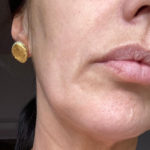 On the way I’ve got much better at handling the gold leaf, which is so fine and light it will waft off and fly around if you so much as breathe on it. There’s times when, unknowingly, I’ve walked around with a gold tip to my nose. Whenever I’ve worked on it I certainly get gold fingers and gold fingernails.
On the way I’ve got much better at handling the gold leaf, which is so fine and light it will waft off and fly around if you so much as breathe on it. There’s times when, unknowingly, I’ve walked around with a gold tip to my nose. Whenever I’ve worked on it I certainly get gold fingers and gold fingernails.